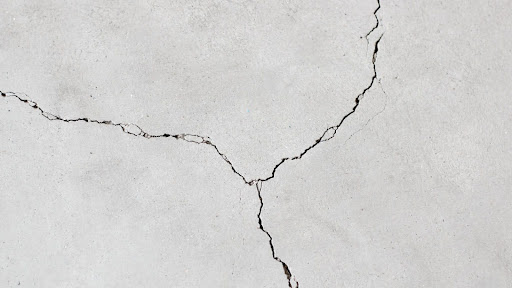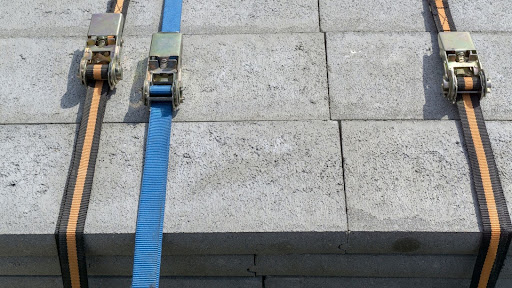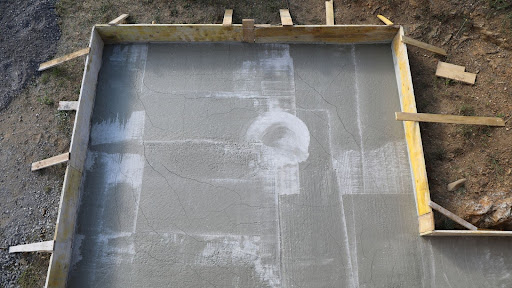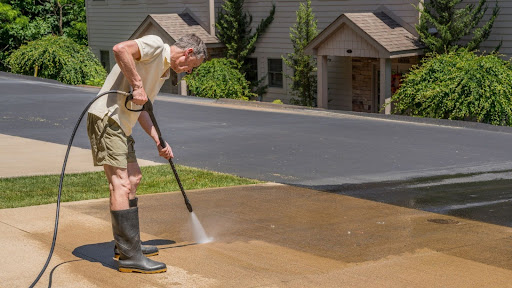Concrete cracking is a big deal in construction and infrastructure. It’s not just about how your concrete looks—concrete cracking can significantly impact its structural integrity, too. Understanding what causes cracks in concrete and how to prevent them can save you a lot of hassle down the track.
Unfortunately, this is not always a straightforward answer. In some cases, a combination of many contributing factors are present, making it hard to identify the exact cause. This article from Australia’s concrete delivery experts will outline the five leading causes of concrete cracking, and will also provide our top tips on how to minimise this risk for your freshly poured concrete. Let’s first dive into the 5 main causes of concrete cracks.
Plastic shrinkage cracking happens when concrete is still in its plastic state, meaning it’s wet and hasn’t been set yet. As the concrete sets, water evaporates, leaving behind tiny voids between the aggregate. If there’s too much water in the mix, these voids can grow larger and lead to concrete cracking. While these gaps form throughout the entire block of concrete, they only show up on the surface. Bleeding helps fill these voids, keeping the water levels balanced and preventing plastic shrinkage cracks.
Thermal cracking occurs when concrete structures experience rapid temperature changes, causing uneven expansion or contraction within the concrete mass. The wild Australian climate of hot weather, humidity and wind all affect your concrete and can increase the chances of thermal cracking. This leads to stress and cracks in concrete. Proper design, such as expansion joints and managing hydration of the cement, can help prevent such cracks. Effective concrete placement and curing also go a long way in minimising thermal stress cracks.

Chemical reactions can be caused by the materials used in the concrete mix and by materials the concrete may have come in contact with. An example of a common chemical reaction is the alkali-silica reaction. When the alkalis in cement comes in contact with specific types of aggregate, a chemical reaction can occur. This chemical reaction creates a gel-like substance, which can expand in the presence of moisture. This expansion causes internal pressure and compression within the concrete, leading to cracking and potential structural damage. In this case, you should find relevant concrete suppliers for your projects.
Steel reinforcements, such as rebar, are often used in reinforced concrete to enhance structural stability. However, when exposed to moisture and oxygen due to cracks in concrete or poor sealing, the steel begins to corrode, forming rust. This corrosion of reinforcement leads to expansion, creating internal pressure that can result in extensive cracking.
Excessive loads or volume changes can cause the concrete to crack under the weight placed upon it. This is often the case in structural elements such as beams, columns and slabs, as they are often the bearer of weight. Inadequate designs and structural planning are the main causes of cracking from overloading, which can lead to significant structural issues.

You should be concerned about cracks in concrete when they compromise structural integrity, grow significantly over time, or signal issues such as poor drainage, improper concrete placement, or insufficient curing. While minor surface cracks, such as crazing cracks, are often cosmetic and a natural result as concrete hardens, larger types of concrete cracks or those accompanied by uneven settling, water pooling, or stress at corners can indicate serious problems.
Concrete cracks near the surface that exceed 3mm in width or depth, or span a large area, may require professional inspection and possibly concrete crack repair. Cracks in concrete slabs exposing reinforcing steel, like rebar, are particularly concerning as they can lead to rust and weaken the structural stability of the slab. Cracks near load-bearing areas or high-traffic zones should also be addressed promptly to prevent further damage or extensive cracking.
An acceptable crack in a concrete slab in Australia is generally a hairline crack that is less than 0.3mm wide and does not affect structural stability. Such cracks are often caused by plastic shrinkage, drying shrinkage, or minor settlement cracks and are considered normal in concrete structures. These cracks in concrete do not compromise the slab’s structural integrity or durability if they are non-structural and do not penetrate the reinforcing steel.
If cracks after hardening exceed acceptable limits, they might require a concrete crack repair solution to ensure long-term performance.

In some cases, cracks can be repaired with specialised fillers or sealants, while others may require section replacements. Regularly inspecting your concrete surfaces and swift preventative action on suspicious cracks can save you from costly repairs or safety risks. Always consult with a professional if you’re unsure whether a crack warrants concern.
Knowing the causes of concrete cracking can help you avoid compromised structural integrity and diminished aesthetic appearance, as well as the durability of your concrete. At Concrete Taxi, we want your concrete to last, which is why we have summed up some measures and tips to avoid concrete cracking.
By using a concrete mix that has the correct water-to-cement ratio (the number one issue impacting concrete quality), you minimise the risk of plastic shrinkage and thermal cracking. Concrete Taxi’s experienced drivers mix the concrete in transit and on-site, allowing us to adjust the strength of the batch to fit your project’s needs. Save yourself the hassle of mixing up the correct concrete mix and use Concrete Taxi’s small batch concrete delivery service!

You should make sure to level the surface and use compacted road base underlay. Be sure to use mesh that is correctly sized, and never pour concrete over grass/soil. Any organic material under the slab will eventually rot, creating voids that lead to cracking. Proper curing and stress management at vulnerable areas, such as slopes or angled spaces, can also help prevent cracking. If your formwork is stable during the early stages of concrete hardening, you can rest assured that no small movements will lead to cracks.

Using the correct concrete mix strength is vital to prevent cracking and ensure durability. For walkways, a minimum of 20 MPa is recommended, while trafficable areas require 25 MPa to handle vehicle loads. For structural elements, 32 MPa is essential to maintain structural integrity, where compression strength is critical. Choosing the appropriate strength reduces the risk of cracks in concrete caused by excessive stresses or improper load distribution, ensuring long-term performance and safety.
Having the proper concrete slab thickness is also very important for structural integrity. For driveways, a minimum thickness of 125mm is required, while carports should have at least 200mm. Slabs thinner than 75mm lack the strength to withstand loads and are prone to cracks in concrete. Insufficient thickness can result in gaps, uneven settling, and concrete cracking in high-stress areas. Sticking to the regulatory thickness prevents extensive cracking and ensures durability for years to come.
Another great way to prevent cracking is by always using a moisture barrier, such as a plastic sheet, where you plan to pour your concrete slabs. This barrier retains water within the concrete mix, allowing for proper curing and effective hardening of concrete. Without it, the soil below can absorb moisture, leading to uneven setting and cracks in concrete during the curing process. Proper moisture retention also reduces the risk of shrinkage cracks and improves the overall strength of the slab.

Temperature and moisture fluctuations can cause cracks in concrete slabs, especially during the plastic state and throughout their lifespan. Applying sealants or coatings to the concrete surface safeguards against rapid drying, thermal cracking, and moisture infiltration. Additionally, maintaining proper drainage prevents pooling, which can lead to structural cracks. Regularly protecting your concrete from extreme weather conditions ensures long-term structural integrity and reduces the risk of extensive cracking over time.
Routine inspection of concrete structures is essential to detect hairline cracks or other types of concrete cracks early. Addressing these issues promptly prevents cracks in concrete from worsening and potentially impacting structural stability. Regular maintenance, such as cleaning, sealing, and minor repairs, also protects against damage from weather or heavy use. Identifying potential cracks early keeps your concrete in top condition and extends the life of your concrete slabs.

By keeping these causes in mind and implementing preventive measures, you can minimise the chances of the concrete in your space cracking. Concrete Taxi is here to help deliver your next small batch of ready mix concrete for your project, ensuring more durable and long-lasting concrete structures.